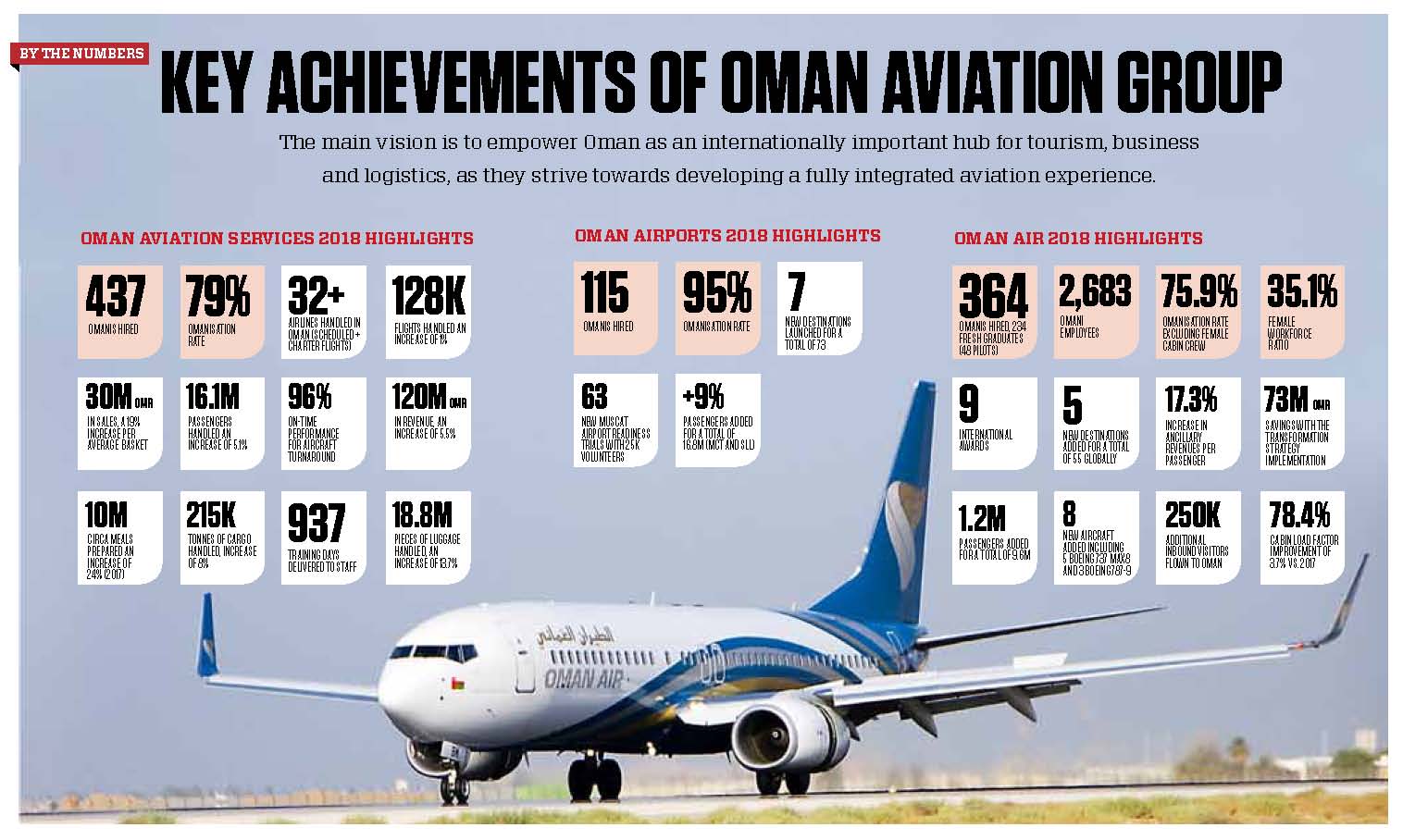
Muscat: Oman Aviation Group has officially unveiled its brand strategy, new logo and vision for the future.
The group, which spearheads Oman’s aviation industry, will create a strong link between aviation, tourism and logistics, and aims to attract foreign investment as it positions itself as a key driver of non-oil growth in Oman’s future vision.
Oman Aviation Group also plans to make the Sultanate a key aviation hub for the GCC region.
The brand was officially launched under the auspices of Darwish bin Ismail Al Balushi, Minister for Financial Affairs, and Ahmed bin Mohammed Al Futaisi, Minister of Transport and Communication and chairman of the group.

Talking to Times of Oman at the official ceremony, Mustafa bin Mohamed Al Hinai, Chief Executive Officer at Oman Aviation group, said: “It is a visual identity that we have unveiled today that shows a commitment of Oman Aviation Group and its people towards the future of Oman. However, our main commitment behind it is that we are unlocking the potential of touristic and logistic sectors in the country as the aviation sector will continue to be the enabler of these sectors. These are the core elements behind the visual identity but the inner value of the identity is much bigger.”
The move comes as part of the group’s efforts to highlight Oman’s emerging significance on the global stage and broaden its appeal as a first-class destination for tourism and investment.
Talking about the achievements of the national airlines, Al Hinai said that both Oman Air and SalamAir are key drivers and growing strong.
“We have seen a remarkable achievement in increasing the passenger traffic into the country by almost 9 per cent. Oman Air could achieve an almost 5 per cent increase in the point to point traffic business compared to last year and this is said to be remarkable in the history of aviation in the country. Oman Airports team, Oman Air and Aviation Services is working extremely hard to make it happen.
“Oman will continue to be very sustainable in its air traffic. Our strategy is to have responsible tourists to the country. Our potential is to have very high yield passengers. Looking at the hospitality sector in Oman, I trust so many developers who have started building new hotels and introducing new experiences. We have seen new shopping malls in the city which have changed the experience of the citizens in the country. I think as long as we have more activities in the city and also the remote areas, that will bring more crowds. What we require today is the clear promotion strategy to promote all these assets, experiences and values,” Al Hinai added.
Highlighting the expansion plans of the group, Al Hinai said they are looking into bilateral agreements with more countries.
“Our expansion plan is to achieve the target of more passengers by 2020. Moreover, we have plans for expansion of airlines that we need to study extremely carefully as the region has been injected with additional capacity. We are building more bilateral agreements with other countries and trying to attract more airlines,” he said.
Following the unveiling of the 2040 strategy at the convention centre on Monday evening, the Group will launch a slew of promotional activities highlighting their new distinctive red-orange livery and propeller brand-mark. The Oman Aviation Group chose this dynamic rebrand to epitomise the Sultanate’s unmistakable energy and drive.
The Group operates three main subsidiaries comprising Oman Air, Oman Airports and Oman Aviation Services, and is a lead facilitator for the Sultanate’s National Tourism Strategy, designed to increase the number of international visitors to Oman by 2040. According to the report by Oman Aviation Group, the new Muscat International Airport is operating at lower costs than expected despite its size being six times that of the old terminal.
The report also highlighted that Oman Airports has reached a 95 per cent Omanisation rate and hired 115 nationals in 2018.
Additionally, 364 locals were hired at Oman Air including 234 fresh graduates and 48 pilots which means a total of 2,683 Omani employees, with an Omanisation rate of 75.9 per cent (excluding female cabin crew). However, the female workforce ratio makes up 35.1 per cent of staff at Oman Air.
Muscat International Airport, which opened its doors to the public on March 19, 2018, has won several awards since operations started including the prestigious ‘World’s Leading New Airport’ prize for Muscat at the World Travel Awards 2018, and saw an increase in the total number of passengers by 5.7 per cent to 16.1 million.